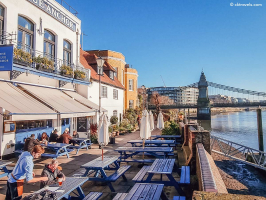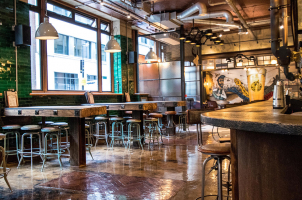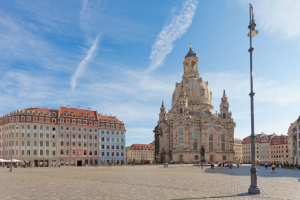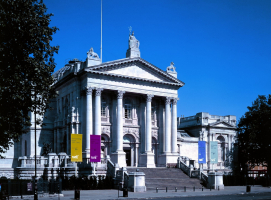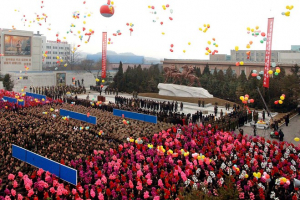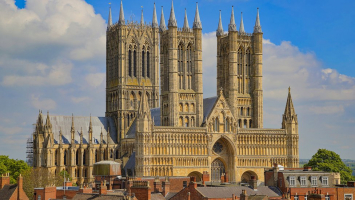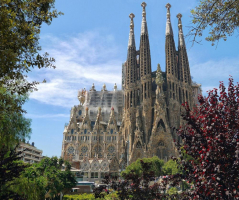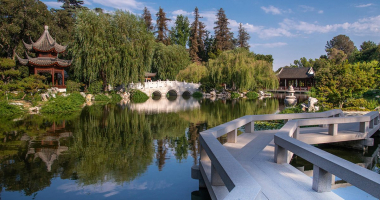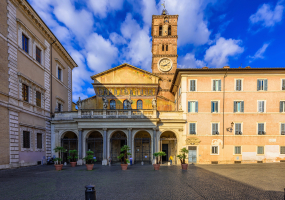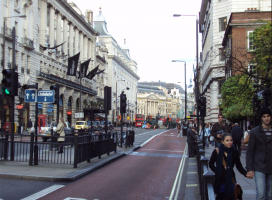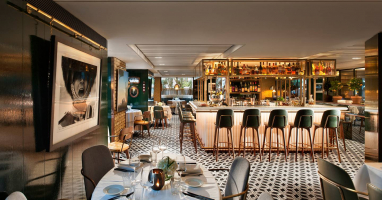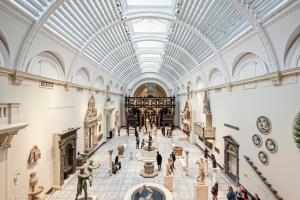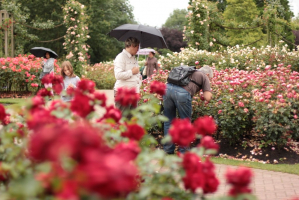Top 10 Most Magnificent Churches and Cathedrals in London
Churches and cathedrals play an extremely important role in people's religious life. They are places for people to express their religious beliefs and pray. ... read more...Some shrines are impressed by their admirable beauty. Let's find out with the Toplist the most magnificent churches and cathedrals in London!
-
In London's City of Westminster, on the northeast corner of Trafalgar Square, stands the Church of England parish church known as St. Martin-in-the-Fields. It has Saint Martin of Tours as its patron. Since at least the medieval era, the location has housed a church. When it was given to Westminster Abbey for management, it was then situated in the farmlands and fields outside of the London Wall.
In the early modern era, as Westminster's population increased, it was elevated to the status of a primary parish church west of the old City. The current edifice was built in 1722–1726 under James Gibbs' important neoclassical design when it was discovered that its medieval and Jacobean structure was on the verge of failure. One of the aesthetic landmarks that enhances the open urban environment near Trafalgar Square is the church.
The walls and roof were determined to be in a state of disrepair during a survey in 1710. In 1720, Parliament issued a law authorizing the raising of up to £22,000 through a parishioner tax for the purpose of restoring the church. On the churchyard and on land in Lancaster Court, a temporary church was built. Newspaper ads announced that families might remove the remains and monuments of the deceased interred in a church or churchyard and reinter them elsewhere.
Location: Trafalgar Square, Westminster London
Years built: 1721–1726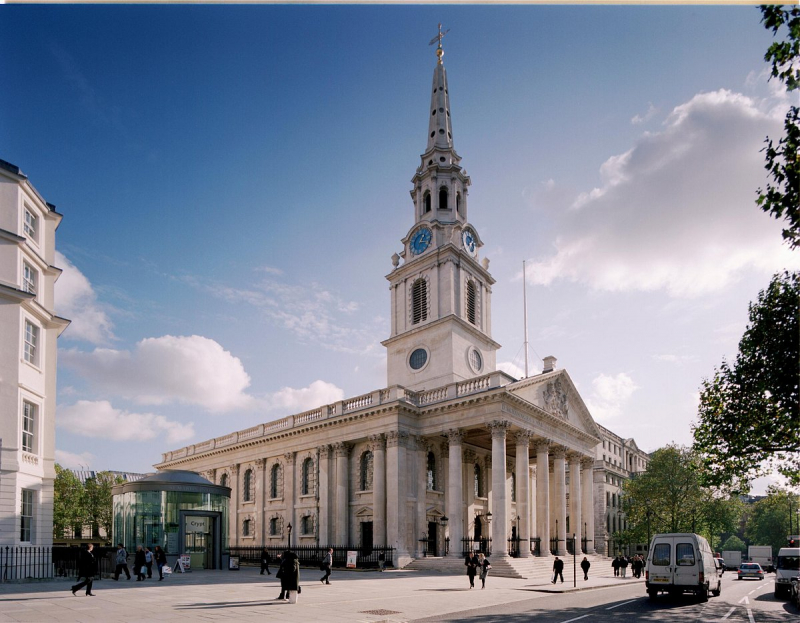
Photo: tripadvisor.com.vn 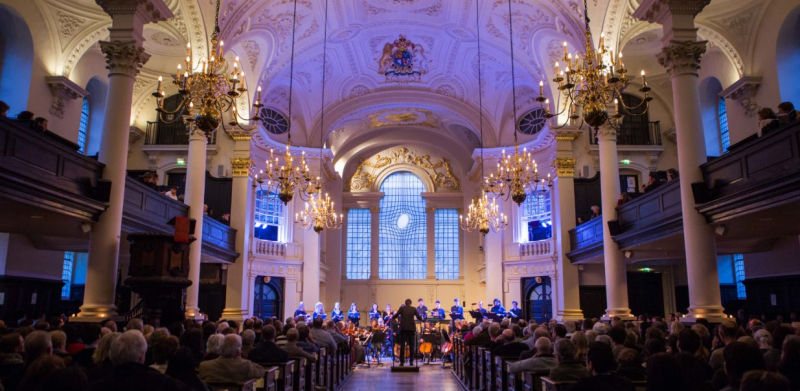
Photo: stmartin-in-the-fields.org/ -
The next position on the list of the most magnificent churches and cathedrals in London is the Westminster Cathedral. The mother church of the Catholic Church in England and Wales is Westminster Cathedral. The Archbishop of Westminster is based there, and it is the largest Catholic church in the UK. The Diocese of Westminster bought the land where the cathedral now stands in the City of Westminster in 1885, and work on it was finished in 1903. A masterwork in striped brick and stone, it was created by John Francis Bentley in the neo-Byzantine style without the use of steel reinforcing. According to Sir John Betjeman, it demonstrates that "the good artisan has no need of steel or concrete".
With a 5,017m2 interior and 3,000 seats, Westminster Cathedral is the 50th largest cathedral in the world. In terms of interior space, it ranks as the 38th-largest Catholic church in the world. The entire structure is in the neo-Byzantine style and has a floor area of approximately 5,017 square meters. Aside from the campanile, the dominant feature of the design is a large, uninterrupted nave that is 18 meters wide and 70 meters long from the narthex to the sanctuary steps and is vaulted with domes.
Location: Francis Street, Westminster, London
Years built: 1895–Present
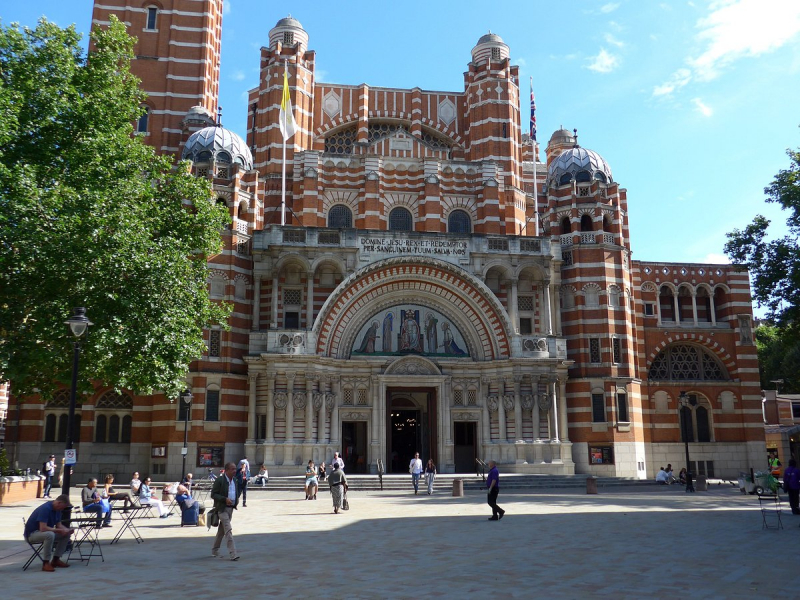
Photo: tripadvisor.com.vn 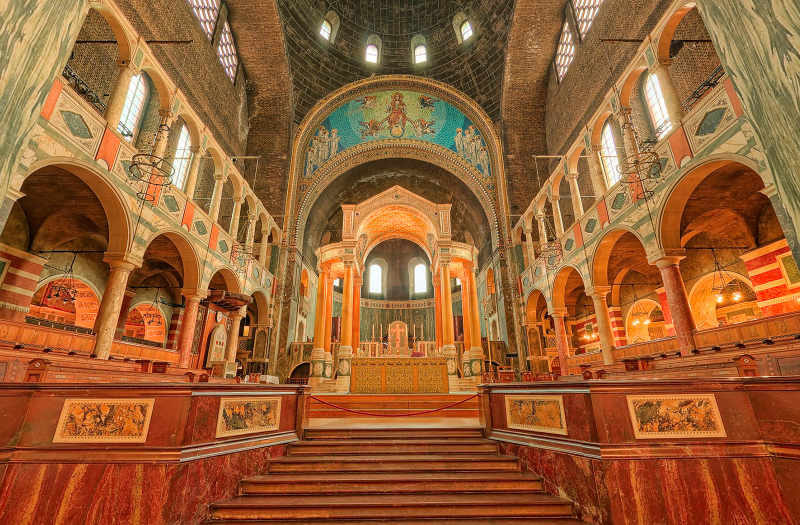
Photo: eyerevolution.co.uk -
The Bishop of London is housed in St Paul's Church, an Anglican cathedral in London. The mother church of the London Diocese is the cathedral. It is a Grade I listed building that is located atop Ludgate Hill, the highest point in the City of London. The earliest church that was built here in AD 604 was dedicated to the apostle Paul. Sir Christopher Wren created the current building, which is a late 17th-century example of English Baroque architecture. Its construction, which was finished during Wren's lifetime, was a crucial aspect of the city's extensive reconstruction effort following the Great Fire of London. As the location of St. Paul's Cross and Paul's Walk, the previous Gothic cathedral (Old St. Paul's Cathedral), which was mostly destroyed in the Great Fire, served as a focal point for medieval and early modern London.
One of London's most well-known and recognizable landmarks is the cathedral. For more than 300 years, its dome has dominated the skyline, framed by the spires of Wren's City churches. From 1710 to 1963, it held the record for the tallest structure in London at 365 feet (111 meters). The dome is still one of the tallest on the entire planet. After Liverpool Cathedral, St. Paul's is the second-largest church structure in terms of square footage in the United Kingdom.With four or five services every day, including Matins, Eucharist, and Evening Prayer or Choral Evensong, St. Paul's Cathedral is a busy place of worship. The cathedral also offers a number of unique services related to the City of London, its corporation, guilds, and organizations. Since it is London's biggest church, the cathedral also participates in numerous official occasions like the service honoring Queen Elizabeth II's Diamond Jubilee. The cathedral typically welcomes visitors every day and has frequent organ recitals and other entertainment. Sarah Mullally is the Bishop of London. She was appointed in December 2017 and formally installed in office in May 2018.
Location: St. Paul's Churchyard, London EC4M 8AD, United Kingdom
Years built: 1675–1710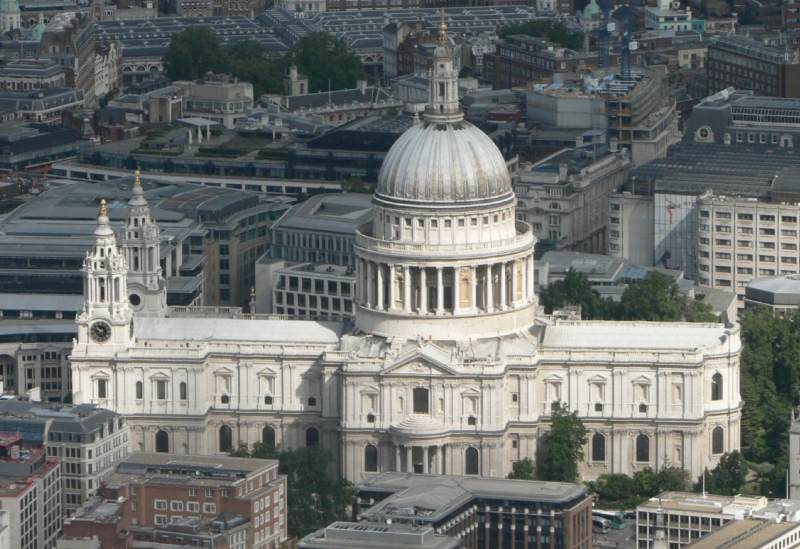
Photo: wikipedia 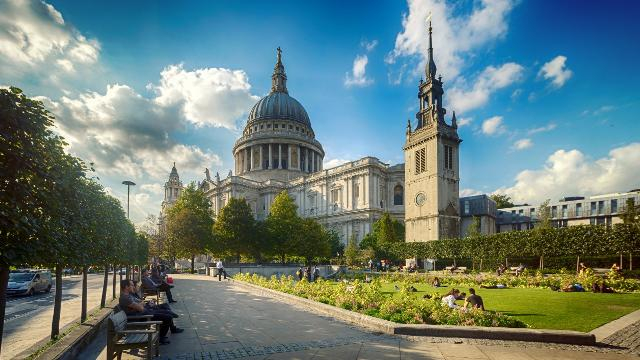
Photo: visitlondon.com -
Informally known as Holy Trinity Sloane Street or Holy Trinity Sloane Square, the Church of the Holy and Undivided Trinity with Saint Jude, Upper Chelsea is a parish church of the Church of England in London, England. The 5th Earl Cadogan, whose London estate it was located, funded its construction between 1888 and 1890 on the south-eastern side of Sloane Street. The building's remarkable Arts and Crafts design was created by architect John Dando Sedding. It took the place of a previous structure that was less than 60 years old and barely half as big.
Since its inception, Holy Trinity has been known for its Anglican church music. From the time the current building was finished until the 1970s, a complete choir was maintained under the direction of notable church musicians of the era, who are noted below. Since Keith Yates tried a revival in 1987, choral music has flourished as a result of the work of other choirmasters. When Holy Trinity Choir was revived and the musical heritage was recreated, this was carried on thanks to the vision of Bishop Michael Marshall, Andrew O'Brien (Director of Music 2002–2015), and organist Michael Brough. Under Mike Abrams' leadership, conQordia continues to serve the church with a professional octet and the associate choir. The church also accepts choirs from other churches.
Location: Sloane St, London SW1X 9BZ, United Kingdom
Years built: 1888–1890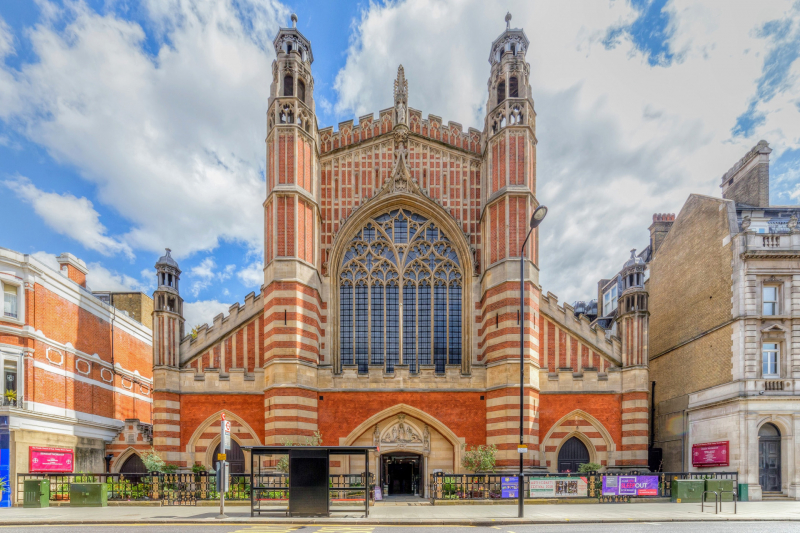
Photo: sloanechurch.org 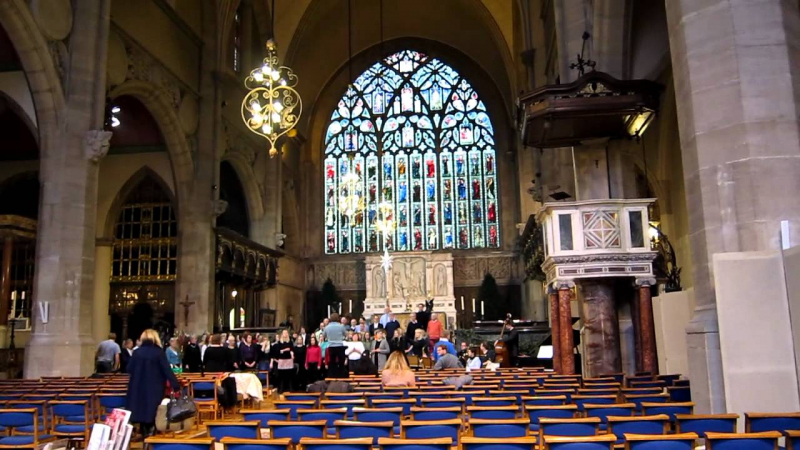
Photo: youtube.com -
St Bride’s Church is probable that a Roman structure on this property served as a house of worship for Christians. A church honoring St. Bridgit, sometimes known as St. Bride of Kildare, was first constructed here in the sixth century. In the 12th and again in the 15th centuries, it was reconstructed.
In the English city of London, there is a church called St. Bride's Church. Although Sir Christopher Wren's original building was largely destroyed by fire during the London Blitz in 1940, the building's most recent incarnation was created by Wren in Fleet Street in the City of London in 1672. Due to its location in Fleet Street, it has a long association with journalists and newspapers. The church is a distinctive sight on London's skyline and is clearly visible from a number of locations. Standing 226 feet (69m) high, it is the second tallest of all Wren's churches, with only St Paul's itself having a higher pinnacle.
At least seven churches have stood on the site before the current St. Bride's. According to legend, St. Bridget founded it in the sixth century. Whether or not she personally founded it, the ruins of the original church appear to bear striking resemblances to a church from the same time period in Kildare, Ireland. King John conducted a parliament at the Norman church, which was constructed in the 11th century and had both religious and secular significance. In the fifteenth century, a bigger church took its place.
Location: Fleet St, London EC4Y 8AU, United Kingdom
Year built: the 6th century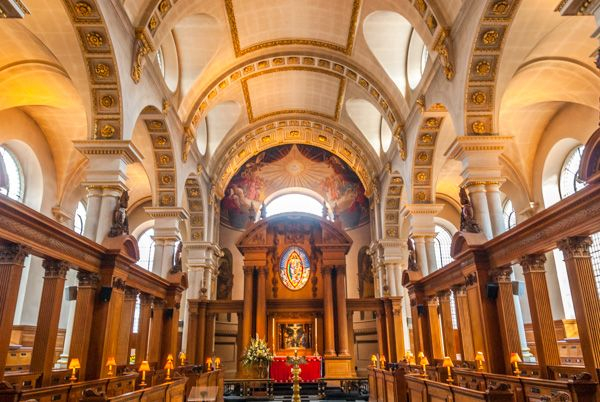
Photo: britainexpress.vn 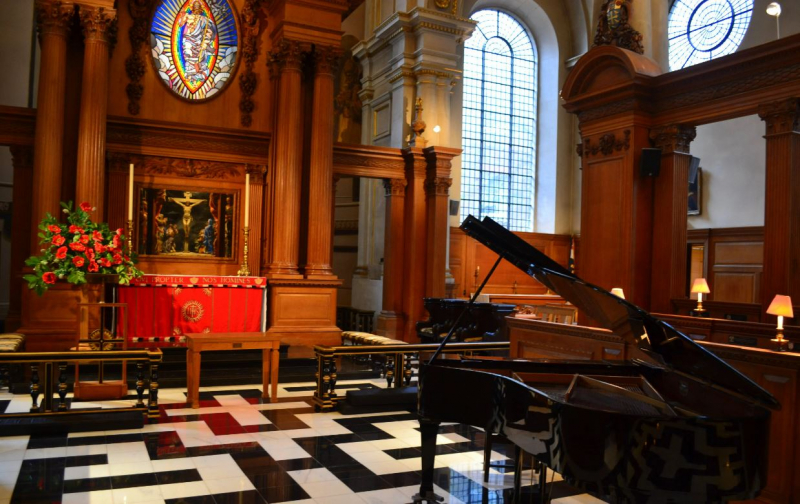
Photo: britainexpress.vn -
The next position on the list of the most magnificent churches and cathedrals is the All Hallows' Day Tower which is a historic Anglican church on Byward Street in the City of London that looks out over the Tower of London. It was once jointly dedicated to All Hallows and the Virgin Mary and is occasionally referred to as All Hallows Barking.
Although subsequent research has cast doubt on these assertions, the church website and other sources say that it is "the oldest church in the City of London" and that it was founded in AD 675. The church was severely damaged during the Blitz of World War II yet survived the Great Fire of London in 1666. It underwent a considerable renovation before being rededicated in 1957. The Reverend Philip T. B. "Tubby" Clayton served as the church's vicar from 1922 to 1962. The church continues to be the guild church of Toc H, the global Christian organization he created.
Since 1922, All Hallows' DayTower has served as Toc H's guild church. On January 4, 1950, the church was made a Grade I listed structure. The church also features a chime that was repaired over numerous weekends in the 1970s by Desmond Buckley and Philip Blewett, who was then a priest there.
Location: Byward StreetLondon, EC3, United Kingdom
Year built: AD 675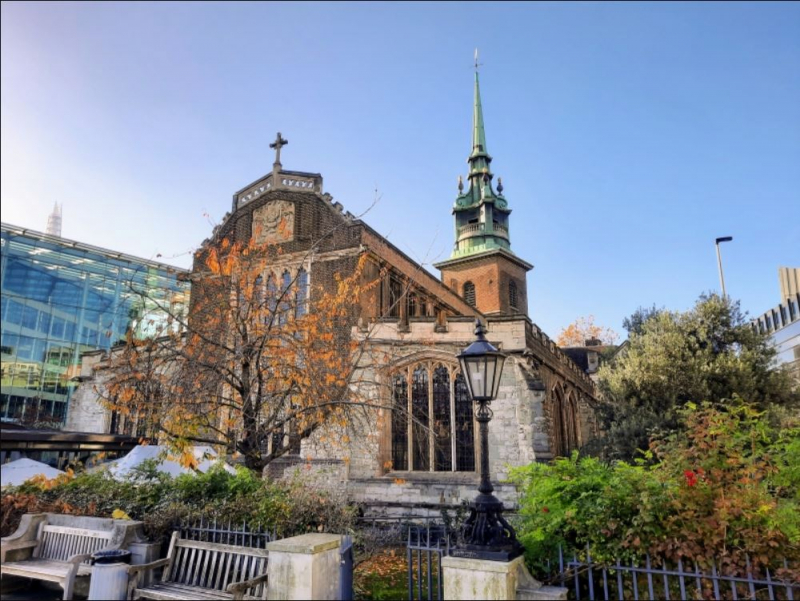
Photo: livinglondonhistory.com 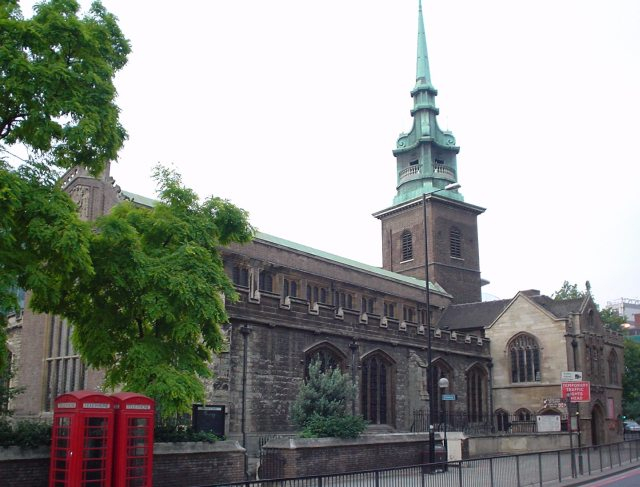
Photo: wikimedia commons -
On the south bank of the River Thames, not far from London Bridge, is where you'll find Southwark Cathedral, also known as The Cathedral and Collegiate Church of St. Saviour and St. Mary Overie. The Anglican Diocese of Southwark's main church. It has been a venue of Christian worship for more than a thousand years, although it has only been a cathedral since the Southwark diocese was established in 1905.
It served as the Virgin Mary-focused church of the Augustinian priory Southwark Priory between 1106 and 1538. With the new dedication of St. Saviour's, it was transformed into a parish church following the dissolution of the monasteries. The parish of St. Saviour's and other South London parishes was transferred to the diocese of Rochester in 1877, ending the church's association with the Winchester diocese. Even though the nave was rebuilt in the late 19th century, the current structure still has the essential design of the Gothic church constructed between 1220 and 1420.
The cathedral is used by King's College London for its medical and dental degree ceremonies, Regent's College for its graduation ceremonies, and London South Bank University for its annual honorary degree ceremony. This affiliation results from the university's merger with Guy's and St. Thomas' teaching hospitals; St. Thomas' began as an infirmary attached to the Priory of St. Mary. The annual Christmas Carol Service at the London Nautical School is held in the cathedral.
Location: Southwark, London, United Kingdom
Years built: 1106–1897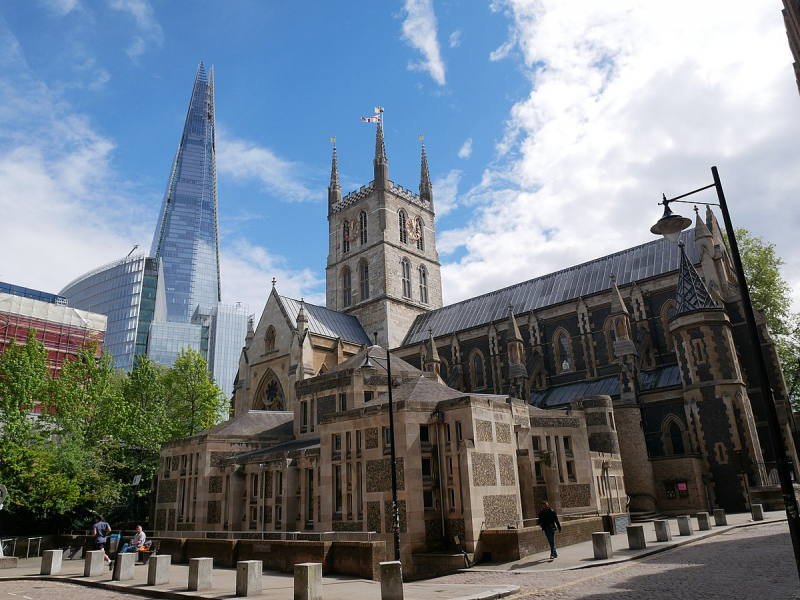
Photo: wikipedia 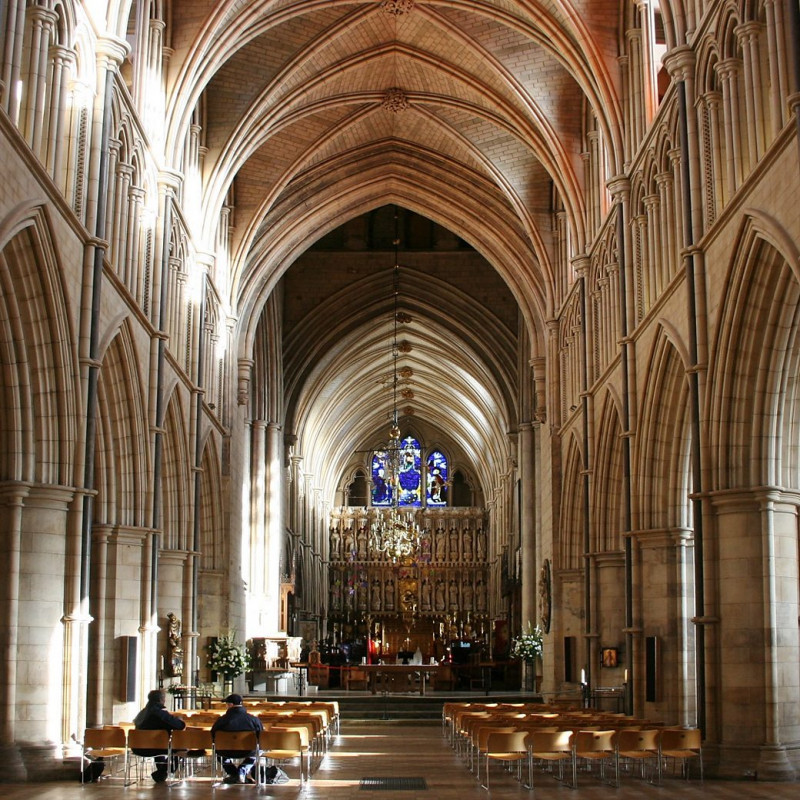
Photo: bbc.co.uk -
The Fitzrovia Chapel is located in Pearson Square in the Fitzroy Place neighborhood of Westminster's Fitzrovia, which is flanked by Mortimer Street, Cleveland Street, Nassau Street, and Riding House Street. Although the chapel was already in use when it was erected in 1891–1892, John Loughborough Pearson's design was used. His son Frank Loughborough Pearson oversaw the completion of the interiors in 1929.
The chapel was constructed in the heart of the former Middlesex Hospital, which was renovated between 1929 and 1935 before being destroyed between 2008 and 2015. The church was kept, and it is currently a part of the Pearson Square construction. The chapel, a Grade II* listed structure, is distinguished by its lavish Gothic Revival design and lavish mosaic interior.
The chapel, created by John Loughborough Pearson in the Italian Gothic style, is regarded as a remarkable example of Gothic Revival architecture. The chapel's interior has a lavishly adorned rib vaulted ceiling that makes extensive use of mosaics and polychrome marble. In the 1930s, Maurice Richard Josey finished the mosaics with help from his son John L. Josey. Fitzrovia Chapel is one of the most magnificent churches and cathedrals.
Location: Fitzrovia, Westminster
Years built: 1891-1892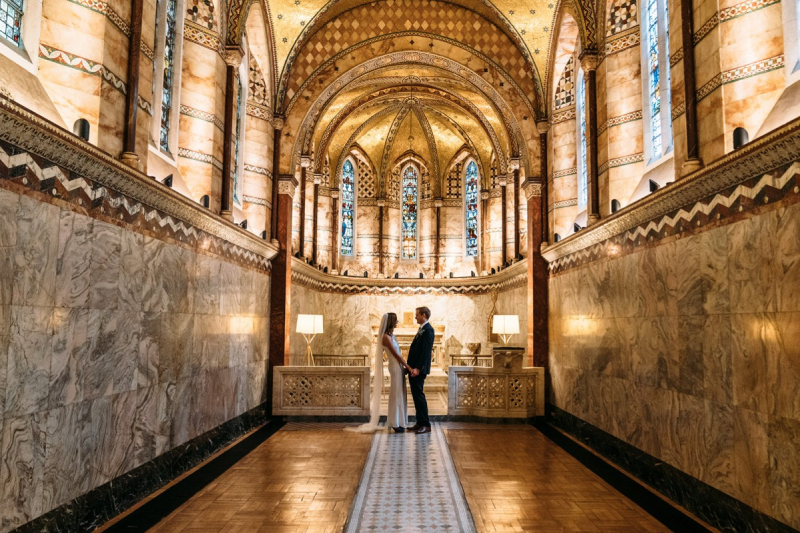
Photoo: amazingspaceweddings.co.uk 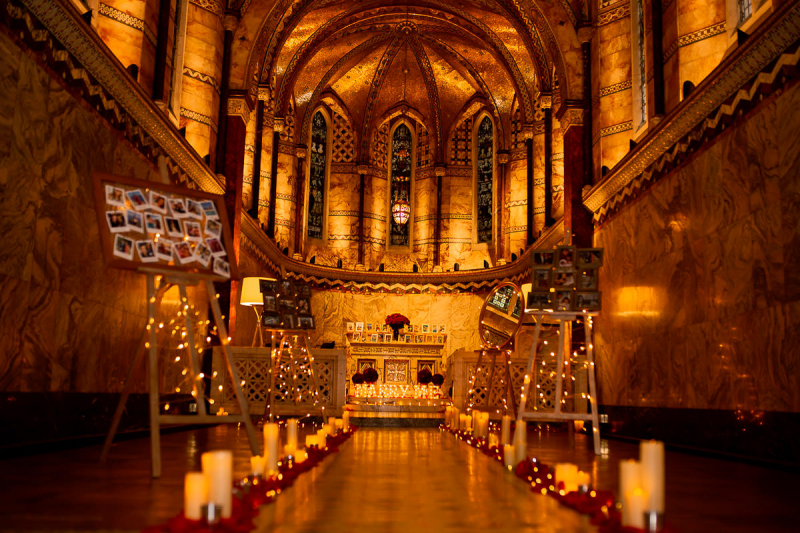
Photo: coupleoflondon.com -
The Collegiate Church of Saint Peter at Westminster, also known as Westminster Abbey, is a sizable, primarily Gothic abbey church located in the City of Westminster, London, England, just to the west of the Palace of Westminster. One of the most famous ecclesiastical structures in the UK, it has served as the coronation location and final resting place for English and later British monarchs. Westminster Abbey has served as the site of every English and British monarch's coronation since William the Conqueror in 1066. Since 1100, the Abbey has hosted sixteen royal nuptials.
A church was allegedly built there during the time of Mellitus, a Bishop of London, in the seventh century, according to a legend that was first recorded by Sulcard in 1080. King Henry III gave the permission to start building the current church in 1245. The church was formerly a part of a Benedictine Catholic abbey that was disbanded in 1539. The cathedral of the Diocese of Westminster was thereafter housed there until 1550, after which it functioned as the secondary cathedral for the Diocese of London until 1556. Mary I returned the abbey to the Benedictines in 1556, and Queen Elizabeth I designated it as a royal peculiar—a church directly answerable to the monarch—in 1559. Westminster Abbey is one of the most magnificent churches and cathedrals.
Location: Dean's Yard, London
Years built: 960
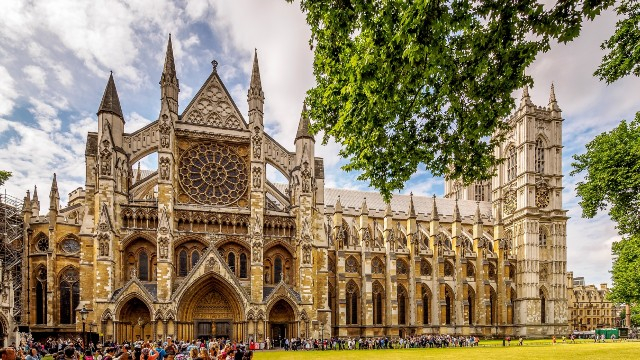
Photo: visitlondon.com 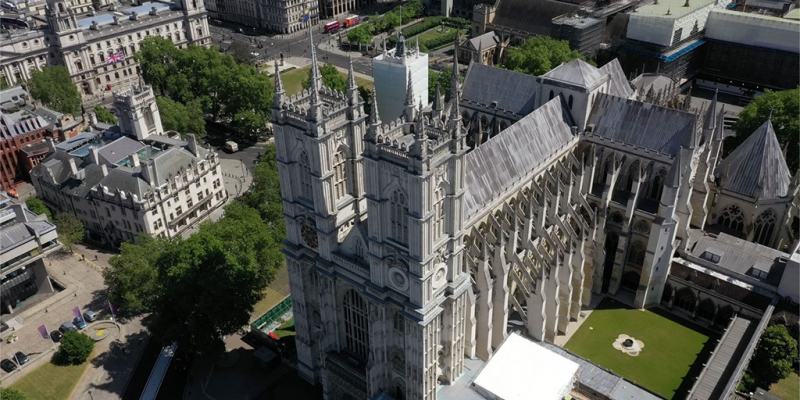
Photo: westminster-abbey.org -
The Knights Templar constructed the Temple Church as its English headquarters. It is a Royal unique church in the City of London, situated between Fleet Street and the River Thames. On February 10th, 1185, Jerusalem's Patriarch Heraclius dedicated it. It served as the royal treasury during King John (1199–1216), with the assistance of the Knights Templar, who were the forerunners of modern international banks. The Inner Temple and Middle Temple Inns of Court, the foundations of the English legal profession, now jointly own it. It is renowned for its stone effigies from the 13th and 14th centuries as well as for being a round church, a common design element for Knights Templar churches. German bombing during World War II caused significant damage, although it has since undergone extensive restoration and reconstruction.
Regular church services are still held at the Temple Church today, including Sunday morning Mattins and Holy Communion. Additionally, it performs weddings, but exclusively for Inner and Middle Temple members. The Temple Church functions as a private chapel for the Inner Temple and the Middle Temple.
Due to the fact that the Temple Church has always been a Royal Peculiar, the choristers are allowed to wear red cassocks. Regarding the connection between its status as a Crown Subject and its peculiarity, there is disagreement. She frequently attends events and services at the Temple Church and has excellent relations with the Bishop of London. The Chapel Royal's ex officio dean is the Bishop of London.
Location: between Fleet Street and the River Thames, London
Year built: 1185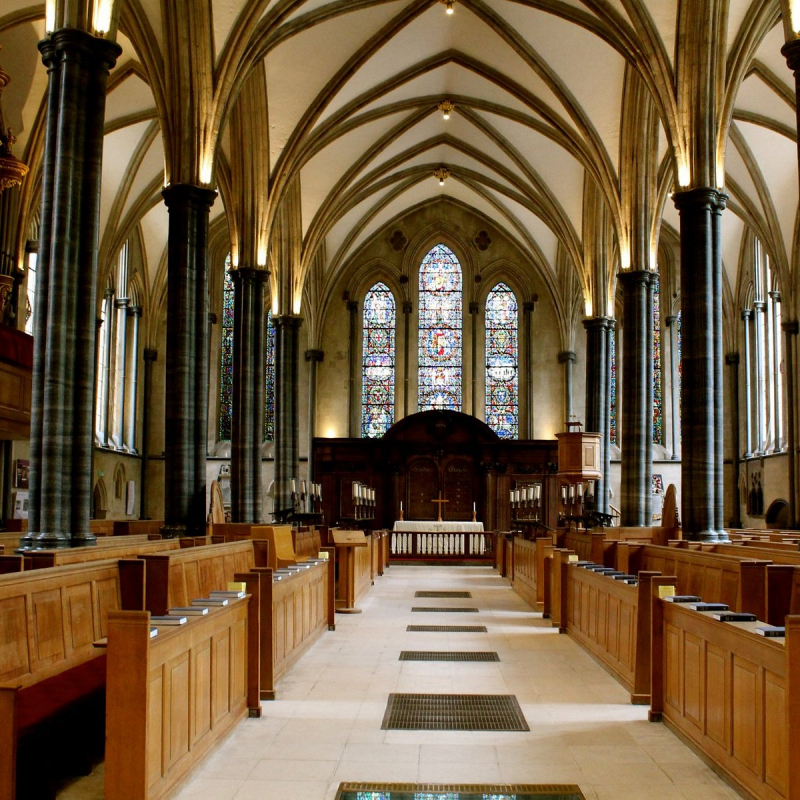
Photo: tripadvisor.com 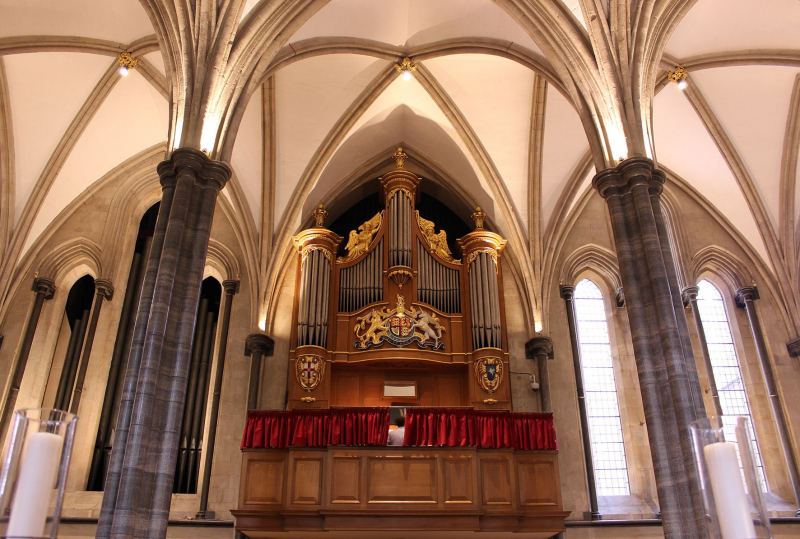
Photo: templechurch.com













